Çatalhöyük revisited - a matriarchal society?
Here is a useful feature article out today on what has been dubbed "the world's first city", the Neolithic Çatalhöyük in Turkey. I thought some of our new members may find it interesting. Çatalhöyük also gave us the first mother goddess figurines and which led to speculation about a possible matriarchal society 9,000 years ago. Since then, we've understood more about these "Venuses" as they have come to be known as, and we think they were actually more likely to have been used for sex rites.
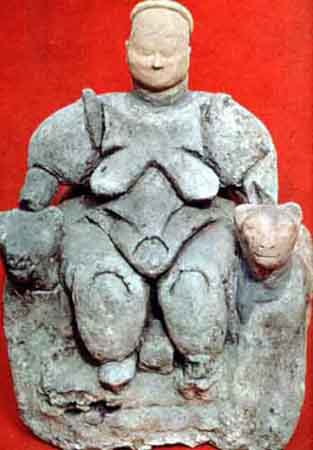
I've pulled out the relevant bits of the article... in other words, missing out the life story of James Mellaart, who first discovered it in the 1950s.
James Mellaart theorized that Çatalhöyük may have been a matriarchal society, based on the evidence that he turned up many small statues of mother-goddesses.

I was interested to see the two lions at the side of the "mother goddess" at the top of this post, as we see them again, 5,000 years later, at Ishtar's feet.

Can you imagine a religious motif lasting that long today? I should imagine that "change management consultants!" would have had a pretty tough time of it, finding work in those days!
There's a further discussion about Catalhoyuk here
The whole article is here

I've pulled out the relevant bits of the article... in other words, missing out the life story of James Mellaart, who first discovered it in the 1950s.
Çatalhöyük is a settlement mound or tel, an artificial hill formed layer upon layer as successive mud-brick settlements were leveled, usually every 100 years or so, and built anew on the rubble. Mellaart first visited the site in 1958, looking for new prehistoric sites to dig in Anatolia. What excited him most about Çatalhöyük was that whilst other sites were usually overlain with much later Bronze Age, Greek, Roman and Medieval remains, at Çatalhöyük all the occupation layers in the mound appeared to be Neolithic, or New Stone Age (roughly speaking, 9,500-4,500 B.C.). Prehistory was Mellaart’s passion. So much so that the Roman-era sites that excite so many visitors to Turkey today were simply F.R.M., the acronym he used in his journal for the self-coined phrase “filthy Roman muck.” Here was an “uncontaminated” prehistoric site, and the ambitious Mellaart was determined to excavate it. First, however, he had to complete his current project, at the later-period site of Hacılar, near Burdur in Turkey’s Lake District...
James Mellaart theorized that Çatalhöyük may have been a matriarchal society, based on the evidence that he turned up many small statues of mother-goddesses.

The world’s first city?
Mellaart’s excavations at Çatalhöyük began on May 17, 1961. In the team were 35 workmen he had used on a previous dig, an artist, an architect, a Turkish archaeology student, an expert on the stone tools which defined the Stone Age and, of course, Arlette. Over the next few seasons Mellaart and his team excavated what, at the time at least, could be described as the world’s first city. For here, so-called primitive man, who had only recently made the transition from a nomadic hunter-gatherer to a settled society, had once lived in a settlement up to 8,000 strong. The excavators, under Mellaart’s chain-smoking direction, eventually painstakingly unearthed around 200 flat-roofed, mud-brick houses, so densely packed together there was no room for alleys, let alone streets, and the inhabitants almost certainly entered their homes via holes in the roof. Mellaart’s excitement knew no bounds when he discovered a section of wall plaster decorated with a scene of hunters in pursuit of deer -- the first such painting discovered on a manmade (as opposed, say, to a cave wall) surface. Preserving friable finds like this was a major headache for Mellaart. He called in an expert on Byzantine frescoes, which resulted in the delicate fragments of painted plaster being treated with resin and cut from the walls before being sent to Ankara for safekeeping. Preventing the whole site from reverting to the mud from which it was built over the rainy winter close season was equally challenging.
Still, work continued, and more and more exciting details of the settlement and the way of life of its inhabitants were revealed as the excavation progressed. Mellaart used the two excavation methods of the time, in places carefully exposing sections of the mound layer by layer; in other areas, to get quicker results, he cut vertical trenches straight through several layers of occupation. The houses he uncovered were all built to more or less the same, flat-roofed, rectangular design. Inside each was a dome-shaped clay oven, positioned underneath the same roof hole he assumed was the door. Benches lined the walls, under which the diggers began to find skeleton after skeleton. The bodies had clearly been ceremoniously buried there, males often with weapons such as stone axes and knives made of obsidian -- a hard, glass-like black volcanic rock very useful to early man as it could be chipped to a razor-sharp edge. The women, on the other hand, were buried with adornments such as shell and bead necklaces and, remarkably, mirrors made from obsidian. In fact, Mellaart theorized that Çatalhöyük may have been a matriarchal society, based on the evidence that although he turned up many small statues of mother-goddesses (best seen at Ankara’s Museum of Anatolian Civilizations) and other female figures, there were no male counterparts.
A Neolithic town in Anatolia
At Çatalhöyük Mellaart proved what previous archaeologists had doubted -- that Anatolia was an important region in the development of Neolithic man. More importantly, he had shown that out on the Konya plain, man, around 7,500 B.C., had banded together to produce something which was remarkably akin to a modern city. Recent archaeological discoveries suggest that there were earlier and larger urban settlements than Çatalhöyük, but at the time Mellaart was digging, only Jericho (which Mellaart had also worked on) could lay claim to being an older “city,” though it was only a tenth the size of its Anatolian rival. A brilliant and dedicated archaeologist, Mellaart’s successes at Çatalhöyük ensured him both academic and public acclaim, and his 1967 book, “Catal Huyuk: A Neolithic Town in Anatolia,” was an instant classic.
I was interested to see the two lions at the side of the "mother goddess" at the top of this post, as we see them again, 5,000 years later, at Ishtar's feet.

Can you imagine a religious motif lasting that long today? I should imagine that "change management consultants!" would have had a pretty tough time of it, finding work in those days!
There's a further discussion about Catalhoyuk here
The whole article is here
Namaste, Ishtar Babilu Dingir
Cybele and Her Gallae
- [ Traducir esta página ]Ishtar's Gate • View topic - Çatalhöyük revisited - a matriarchal ...
- [ Traducir esta página ]1 entrada - 1 autor - Última entrada: 24 FebÇatalhöyük revisited - a matriarchal society? ... A Neolithic town in Anatolia At Çatalhöyük Mellaart proved what previous archaeologists ...
ishtarsgate.com/phpBB3/viewtopic.php?f=28&t=939 - En caché Obtener más resultados de debate
Obtener más resultados de debateHekate - Hecate Documentary Film . Lagina, The Sacred precinct of ...
- [ Traducir esta página ]The Anatomy of Human Destructiveness - Resultado de la Búsqueda de libros de Google
Erich Fromm - 1992 - Psychology - 240 páginas
books.google.es/books?isbn=080501604X...Çatalhöyük - Wikipedia, the free encyclopedia
- [ Traducir esta página ]Women in Egypt: Matriarchy?
- [ Traducir esta página ]The myth of matriarchal prehistory: why an invented past won't ... - Resultado de la Búsqueda de libros de Google
Cynthia Eller - 2001 - Social Science - 288 páginas
In this lucide and fascinating volume, Eller traces the emergence of feminist matriarchal myth, explicates its functions, and examines the evidence for and ...
books.google.es/books?isbn=0807067938...- [PDF]
Heide Goettner-Abendroth Did matriarchal forms of social ...
- [ Traducir esta página ]Formato de archivo: PDF/Adobe Acrobat - Vista rápida
On the subject of Çatal Hüyük in Anatolia, an old problem has recently been .... The new definition of „matriarchy“ in Modern Matriarchal Studies ...
www.goddessconversations.com/resources/HeidePaper.pdf - Similares Matriarchal History: The Preface to The Feminine Universe
- [ Traducir esta página ]Archaeology and fertility cult in the ancient Mediterranean: ... - Resultado de la Búsqueda de libros de Google
Anthony Bonanno - 1986 - Social Science - 356 páginas
The matriarchal political and social organization is thought to be reflected in the Sacred ... including Minoan, Mesopotamian,and Anatolian communities. ...
books.google.es/books?isbn=9060322886...



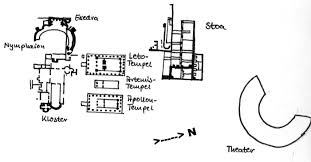
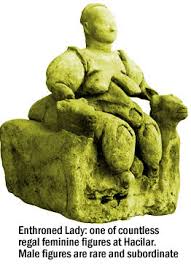
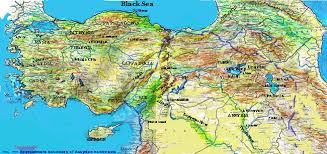
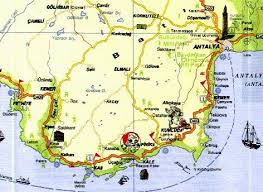
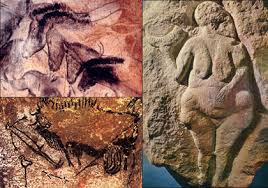
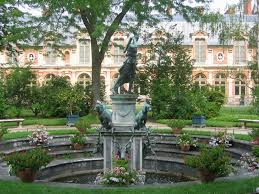

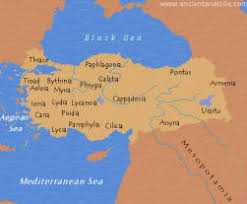



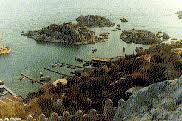
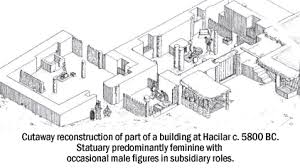
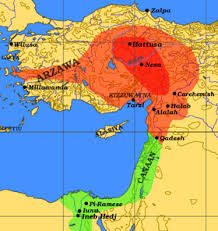


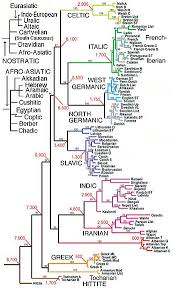
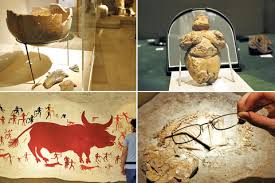

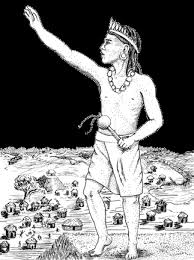
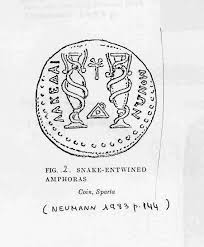
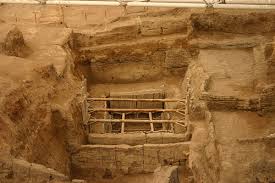


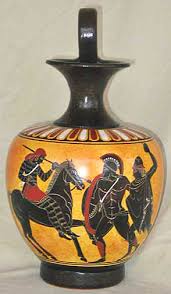






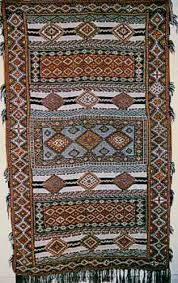

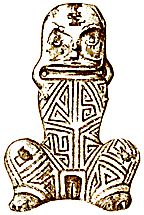

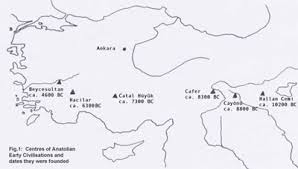

No hay comentarios:
Publicar un comentario
yesyukan